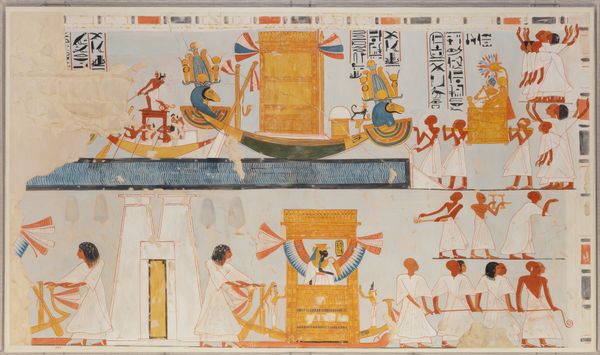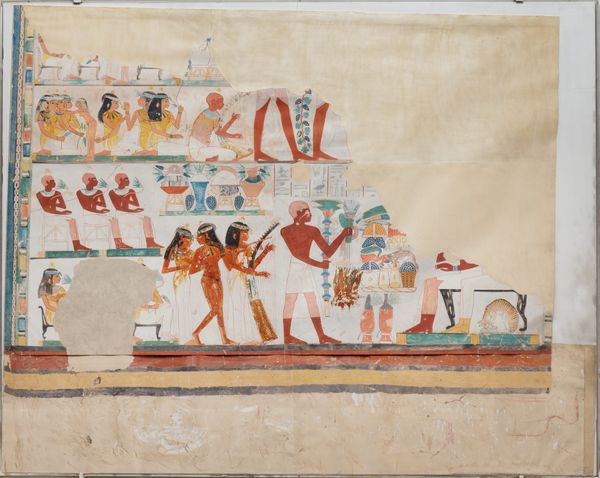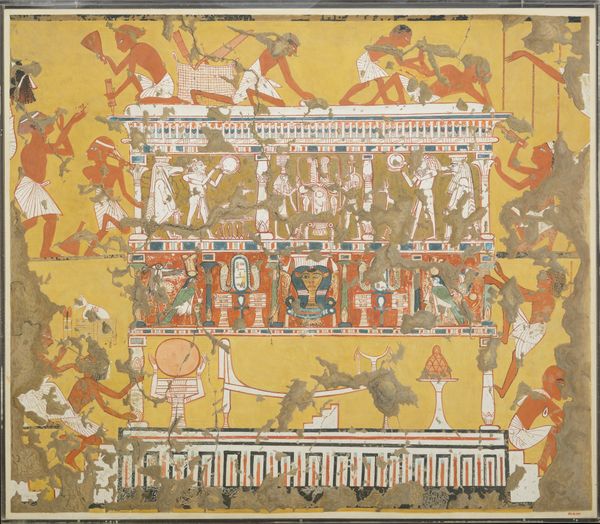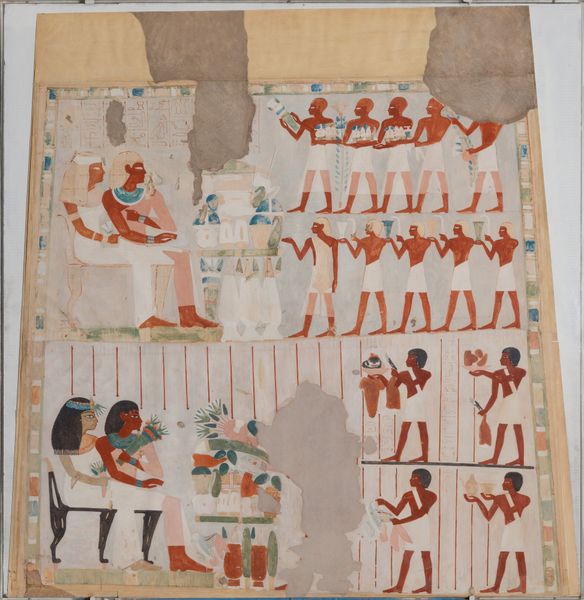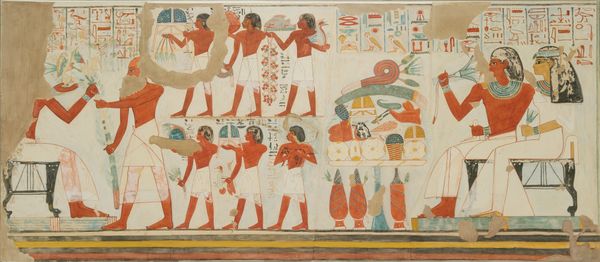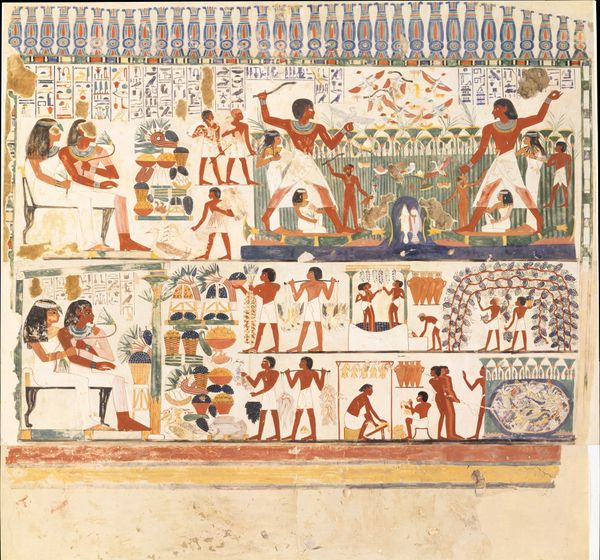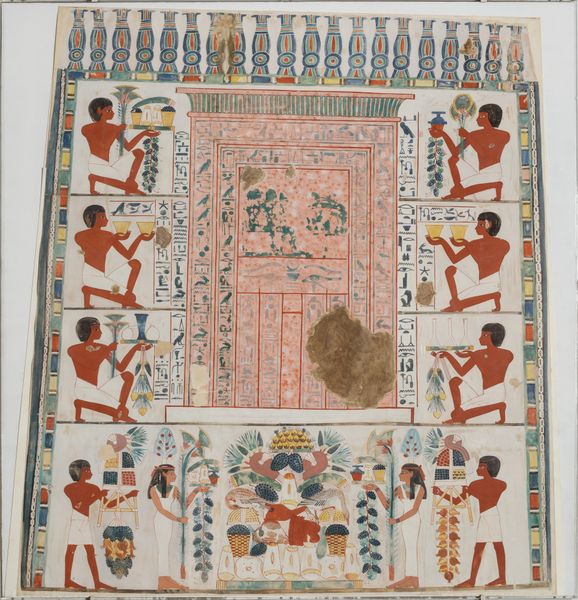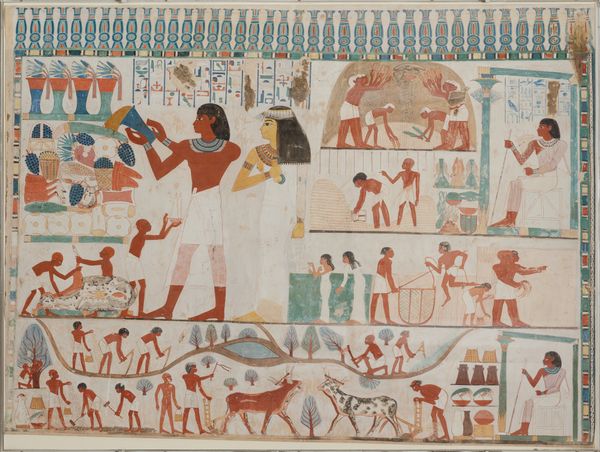
painting, fresco
#
water colours
#
narrative-art
#
painting
#
landscape
#
ancient-egyptian-art
#
figuration
#
fresco
#
egypt
#
ancient-mediterranean
#
history-painting
#
watercolor
Dimensions: Facsimile: H. 75 cm (29 1/2 in); W. 196 cm (77 3/16 in), scale 1:1; Framed: H. 78.1 cm (30 3/4 in.); W. 199.1 cm (78 3/8 in.)
Copyright: Public Domain
Editor: This is “Festival Scene, Tomb of Amenmose,” a fresco painting from 1295 BC. Looking at the registers of figures, it feels like I’m seeing a very organized celebration, a snapshot of an ancient tradition. How do you interpret this work? Curator: This piece is a window into the stratified society of ancient Egypt. Consider how the fresco format itself becomes a tool for immortalizing and thus reinforcing, established power dynamics. Note the emphasis on ritual and the clearly defined roles within this ‘celebration’ – what does that tell us about social mobility, or perhaps, the lack thereof? Editor: So you see it as a depiction of power? Curator: Absolutely. And it’s crucial to consider who this narrative serves. Tombs weren't public spaces; they were intensely personal, built to ensure safe passage of the deceased into the afterlife. By commissioning art that reflects established hierarchies, the elite sought to project their influence into eternity. How do you think representations of women fit into this framework? Editor: That's interesting, I see some women. Do their placements and clothing tell a story of their status and social influence, perhaps or, conversely, their limited roles within that era? Curator: Exactly. Think about what isn’t shown, too. Who is missing from this “Festival Scene”? Whose stories are not being told? Consider art-making itself: who has access, who doesn't and how does that shape what we perceive as historical ‘truth’. Editor: It’s fascinating to view this not just as a scene, but as a carefully constructed statement of power and social order. I'll definitely look at similar pieces with that perspective moving forward! Curator: Wonderful, and keep questioning these portrayals to reveal more layered perspectives and interpretations.
Comments
No comments
Be the first to comment and join the conversation on the ultimate creative platform.
